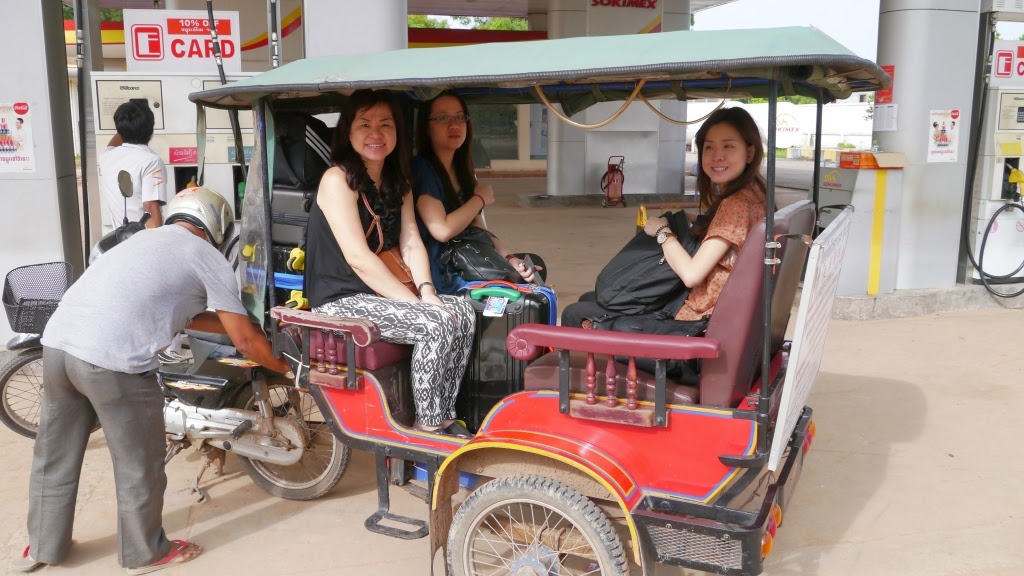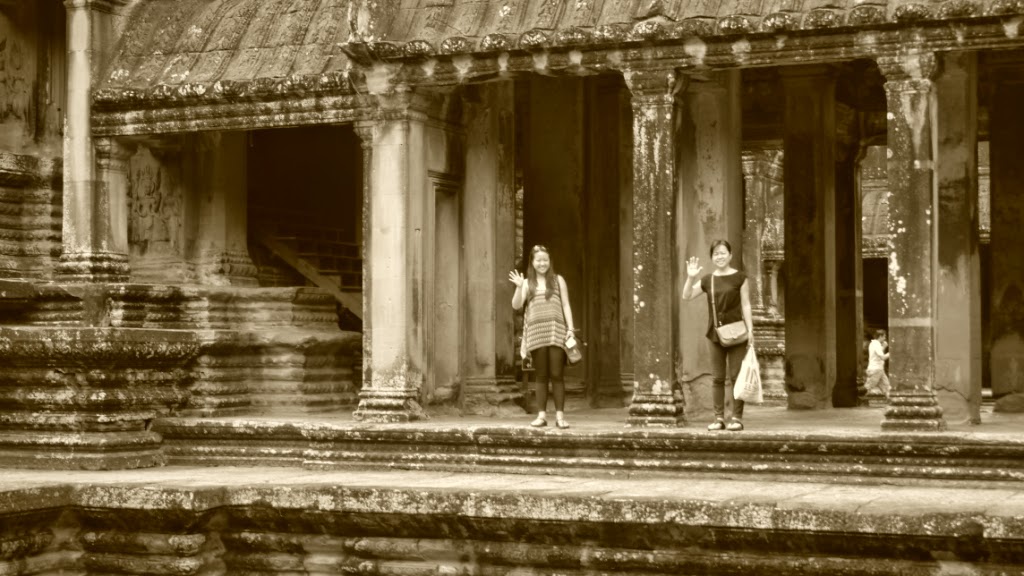It is a 2 hours direct flight from KLIA2 to Siem Reap. The world reknown UNESCO World Heritage Site Angkor Temples is located just a few kilometres away, easily reached by the ubiquitous tuk-tuk.
Siem Reap is a thriving tourist town mainly because of the Angkor temples. Tourist from all over pour in by the plane loads and you have the usual hotels, restaurants, pubs, health spas, shopping, souvenir shops, etc mainly to cater to tourists. The plus point is it is not as seedy as Phuket or Koh Samui with their night life entertainment.
Angkor Wat was first a Hindu then subsequently a Buddhist temple complex in Cambodia and the largest religious monument in the world. The temple was built by the Khmer King Suryavarman II in the early 12th century in Angkor the capital of the Khmer Empire as his state temple and eventual mausoleum. The modern name, Angkor Wat, means "Temple City" or "City of Temples" in Khmer Angkor, meaning "city" or "capital city".
26 July 2014, Saturday
Hired a tuk-tuk for the day to Tonle Sap from the Airport for USD15. We dropped off our luggage and freshen at the hotel before proceeding to the lakes.
The Tonlé Sap is unusual for two reasons: its flow changes direction twice a year, and the portion that forms the lake expands and shrinks dramatically with the seasons. From November to May, Cambodia's dry season, the Tonlé Sap drains into the Mekong River at Phnom Penh. However, when the year's heavy rains begin in June, the Tonlé Sap backs up to form an enormous lake.
 |
| It is very dusty. Advisable to bring along face mask. |
 | ||
The main pier to Tonle Sap. Boat tour is $20 pp lasting approx 2.5 hrs. We think it is worth the price.
|
The driver subsequently dropped us off at Pub Street. We had dinner at the 'Blue Pumpkin' and foot massage for our tired feet at the night market at $4 an hour with a short neck and shoulder rub thrown in for free.
27 July 2014, Sunday
It is a one complete day of exploring the temples in the small tour circuit of Angkor vicinity. It covers Angkor Wat, Angkor Thom, Ta Prohm Temple and Phnom Bakheng.
Angkor Wat:
Exhibits the most unique religious architecture in the world and is the best preserved temple in Angkor complex. It spans 1,950,000 sq metres. The temple was orignally dedicated to the Hindu God Vishnu then modified later as a Buddhist temple.
 |
| Buy from one and the rest come rushing! |
 |
| Within the temple grounds |
Bayon Temple:
One of the largest Mahayana Buddhist temple in the Angkor complex. The Bayon was built in the heart of Angkor Thom (a great city spanning 9 sq km). The Bayon's most distinctive feature is the multitude of massive, serene stone faces that grace its many towers.
 |
| The stone faces are all depicted with their eyes closed and with a smile |
 |
| She's literally jumping with joy |
It is one of the most picturesque tree temples in the Angkor complex. Originally named Rajavihara, Ta Prohm temple was commissioned 1186 AD by King Jayavarman VII and was dedicated to his mother in honour of Prajnaparamita (the goddess of wisdom in Mahayana Buddhism).
Phnom Bakheng
This is a temple up on a hill to view the surrounding Angkor complex and beautiful sunsets. Alas, after walking about 1.5 km up the hill, it started to rain. We were in the middle of the monsoon season and it rained every afternoon.
 |
| The storm clouds blowing towards us |
28 July 2014, Monday
The third day being a free day started with a visit to the local market.
 |
| The gold shops are located in the market itself. |
Food prices was reasonable with a bowl of Khmer curry (highly recommended) with a plate of rice going for $5. Angkor beer at the cafes is really cheap averaging between $0.45 and $0.50. Even cheaper than mineral water at $1 or $2!
Plane tickets plus accomodation pp was RM1,200. The air ticket was more expensive than the average because it was a peak holiday period.
See Tomb Raider: The Temple Run for more photos of the Angkor temples.
Mom's Rating: 7/10.
































No comments:
Post a Comment